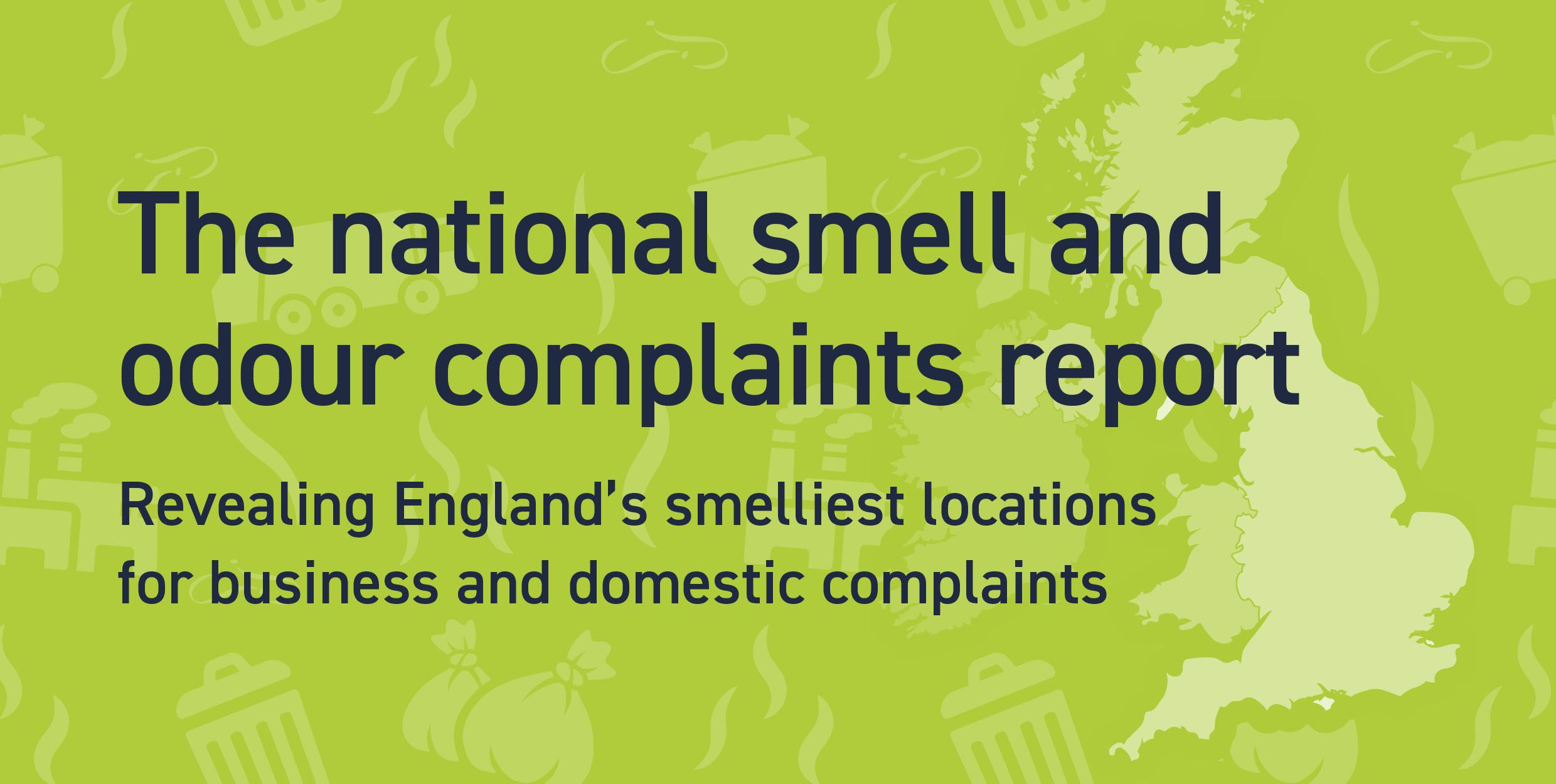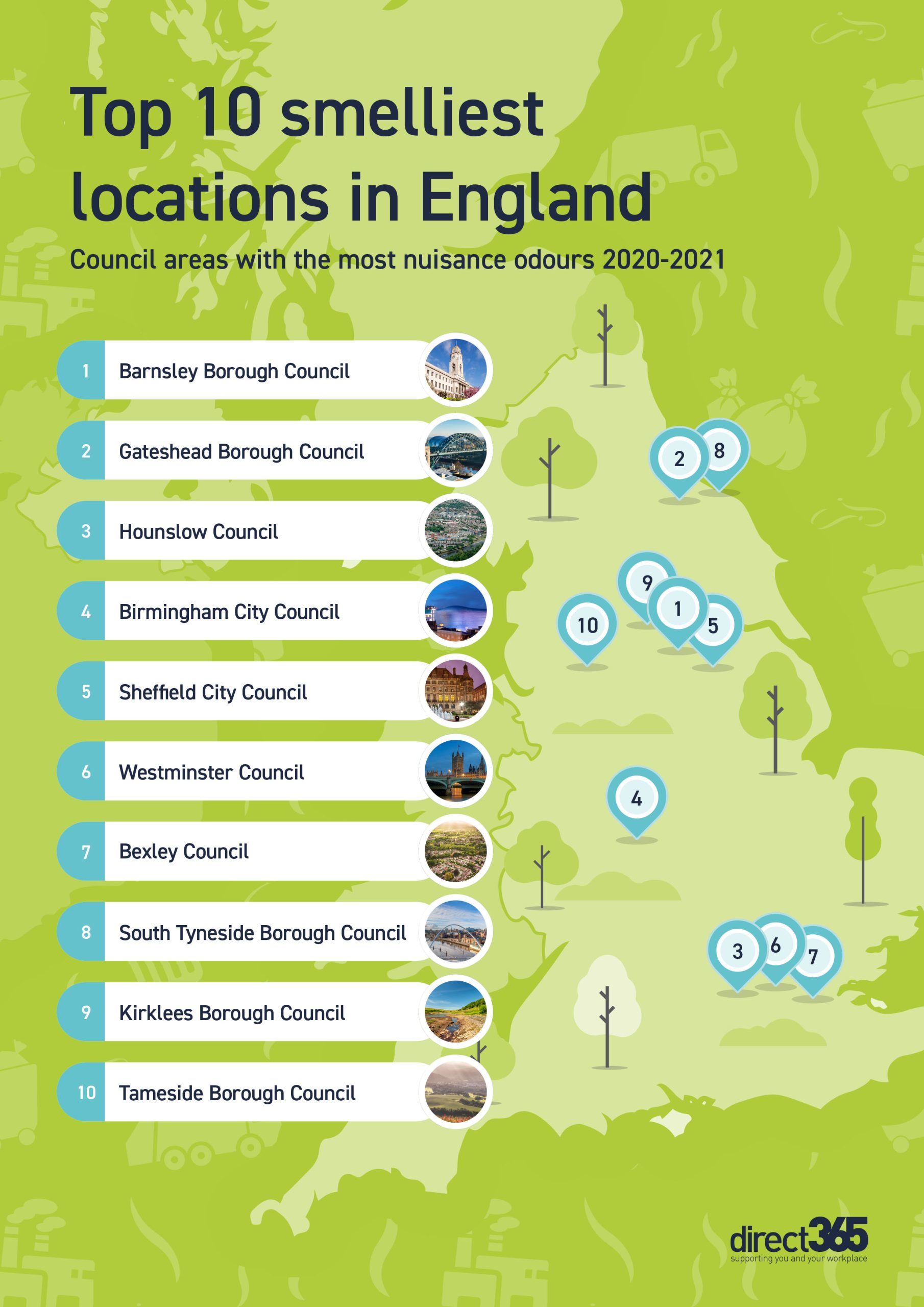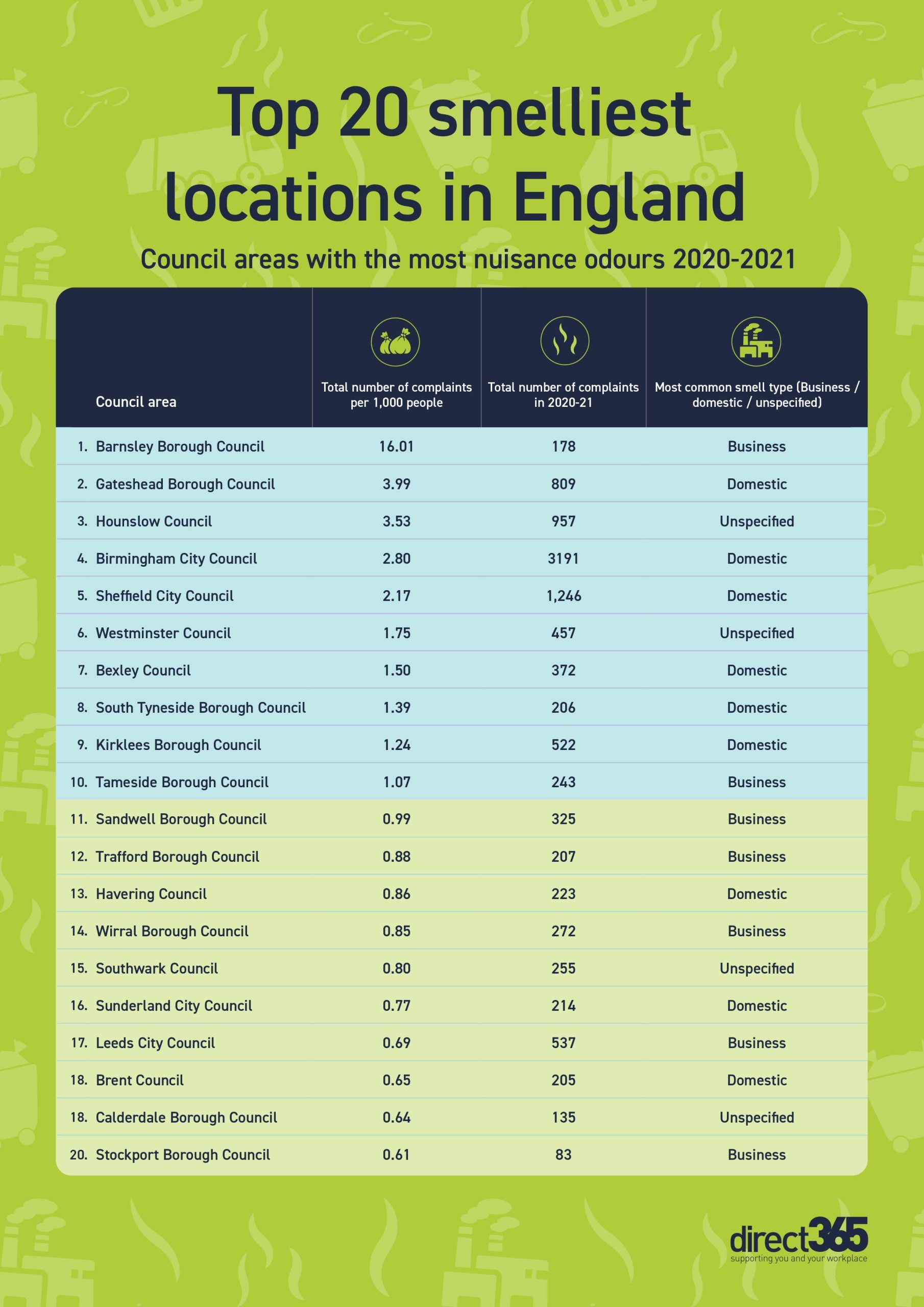In the world of whiffs, there’s bad…and then there’s bad for your health. For some UK residents, the stench barometer might start at dog foul on pavements— a minor albeit unwelcoming inconvenience. But at the other end of the spectrum, cleaning chemicals, sewage plants, and commercial waste present more serious risks along with their naturally pesky pongs.
So bad are some of these smells that many people have made formal complaints to their respective councils, hoping to banish all manner of nuisance odours from their neighbourhoods.
Where? And what? That’s what we set to find out.
The national smell and odour report analysed more than 12,500 complaints across 68 council areas in England (46 responded) to find the locations with the most smell issues. Freedom of information and Environmental information regulation requests were collated and analysed alongside constituency population data to reveal the total number of complaints per 1,000 people.
As you will see, our national report revealed that Barnsley Borough Council is the smelliest area in England, having recorded the most nuisance odour complaints between the start of 2020 and end of 2021. London and the north of England featured heavily in our list of the smelliest locations, too.
Two South Yorkshire cities (Barnsley and Sheffield) featured in the top five smelliest regions, alongside Gateshead, Hounslow, and Birmingham. Barnsley Borough Council had 178 complaints across the two years, the equivalent of 16 complaints per 1,000 people—the majority of which came from business-related smells.
In addition, Birmingham City Council received a massive 3,191 complaints during this period— 2.8 per 1,000 people. Most of these odour complaints came from domestic sources rather than business smells.
We broke the data down further to see which odours were causing the most nuisances across England. These were then split into three categories, the first of which is business, including any smells generated by commercial premises, industry, and agriculture.
The second category was domestic smells, including household and residential stenches, such as dog fouling. Anything that doesn’t fall under ‘business’ or ‘domestic’ (plus any data from councils where the source wasn’t recorded) is classified under “unspecified”.
The below tables show the worst locations for both business and domestic odour complaints. As you can see, Barnsley is the worst for business smells, while it seems Birmingham has the biggest problem with domestic odours.
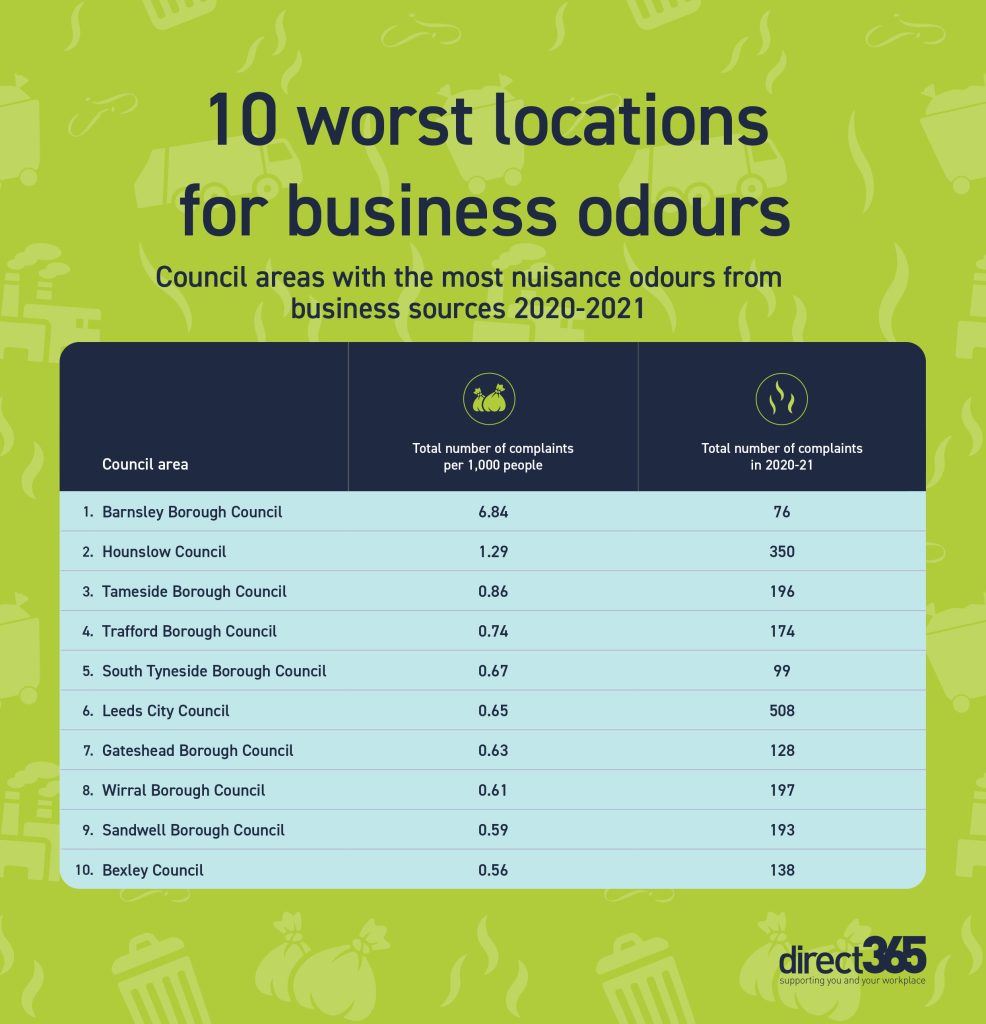
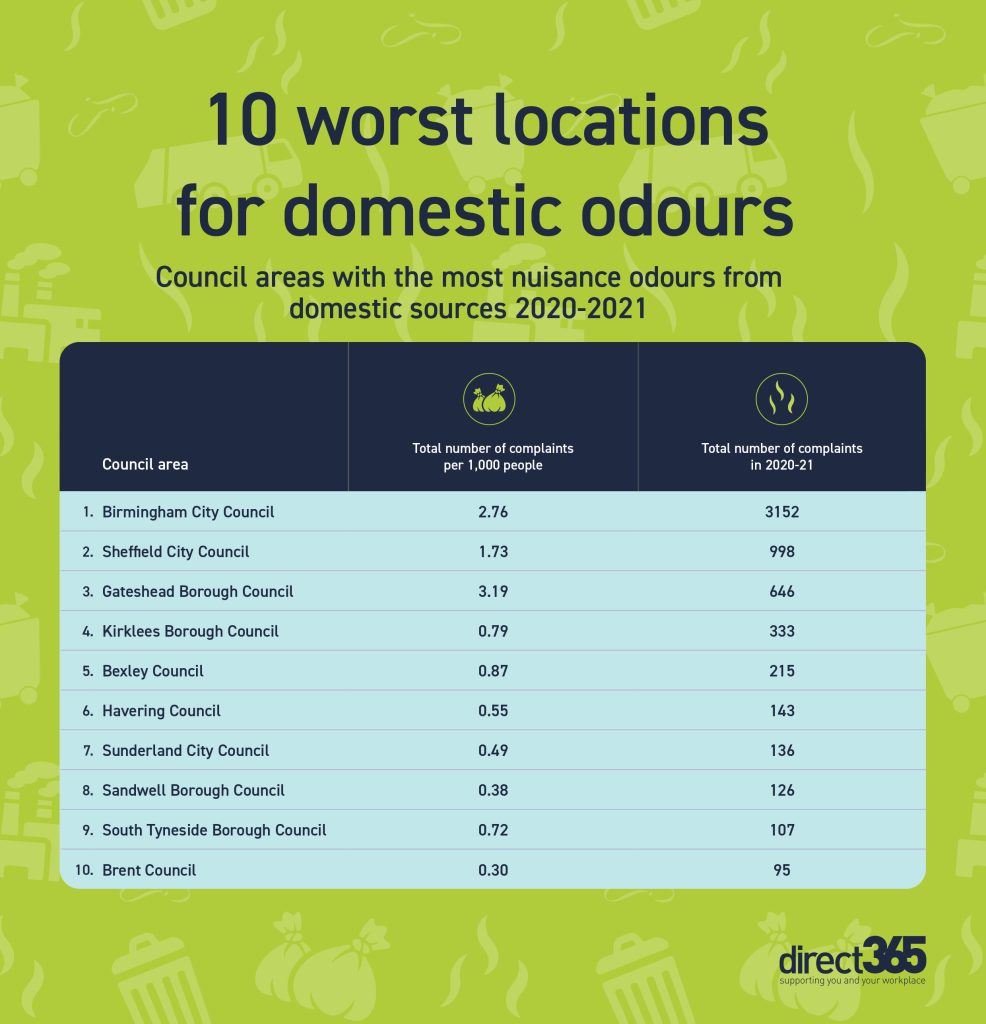
Out of the 12,501 complaints analysed in this report, more than half came from domestic sources alone—6,694 complaints in total. The remaining figures make up 3,473 business-related odour complaints and 2,334 that were unspecified.
Businesses, councils, and the public all have a duty to keep their local area hygienic and safe. Therefore, good waste storage and disposal are key to ensuring nuisance smells are kept to a minimum and surrounding environments are more pleasant.
Be mindful that poor waste solutions lead to bad smells, pests, general untidiness, and potential legal challenges. Direct365 offers waste management services and products to help avoid these issues, including our range of bestsellers.
Methodology and sources
The national smell and odour complaints report used FOI and Environmental Information Regulations data when approaching 68 council areas in England.
Forty-six councils responded with relevant data, including the total number of complaints between January 2020 and December 2021 (2 years), and the odour source/type (business, domestic or unspecified).
The data was then combined with council population figures to find which locations had the highest complaints per 1,000 people. Population sources were collated from the respective local government websites and Wikipedia.
If you plan to use this report, cite Direct365 as the source and link to this page. Full data files are available upon request.
Back
